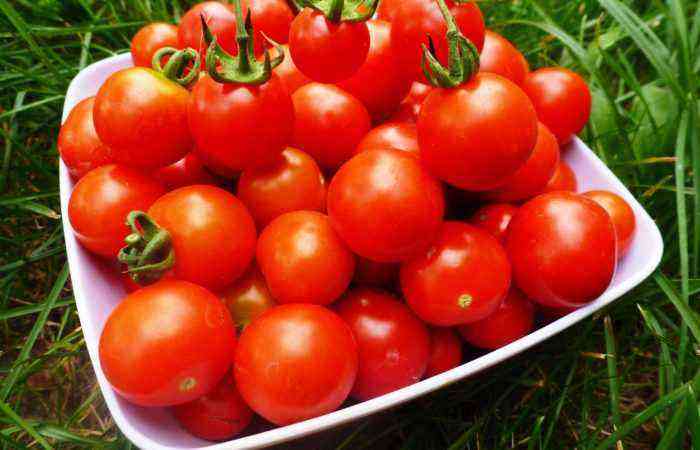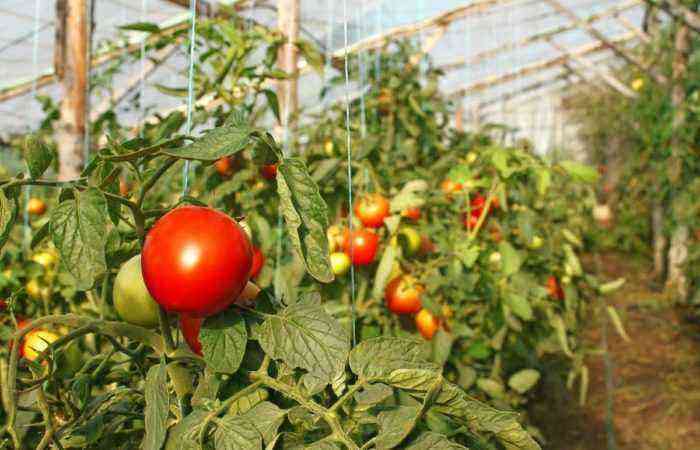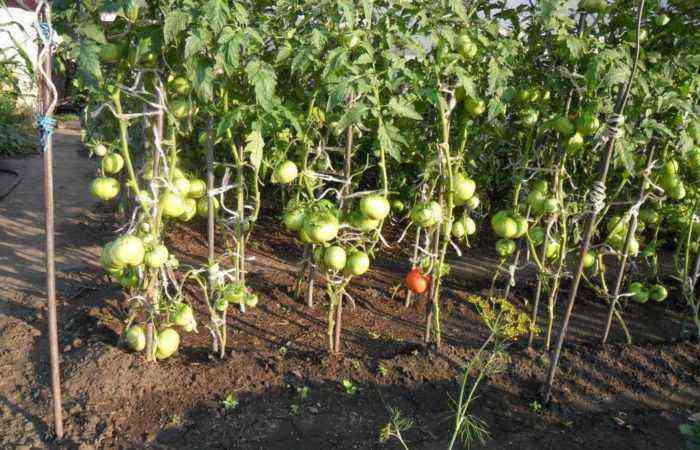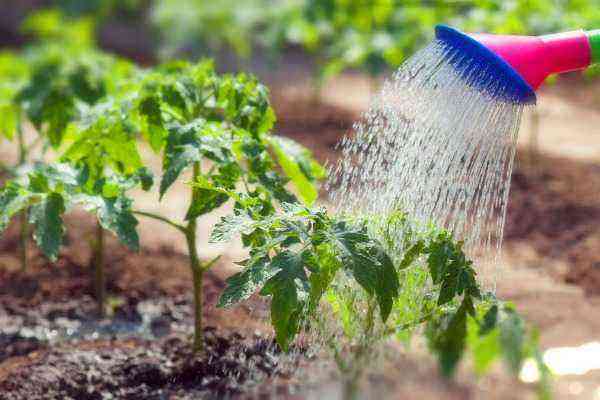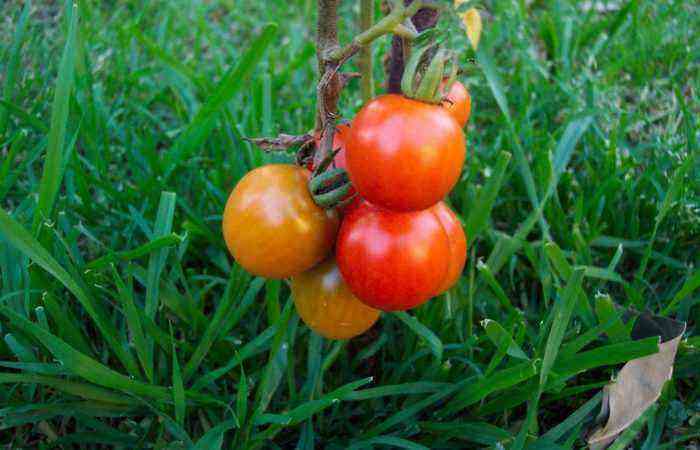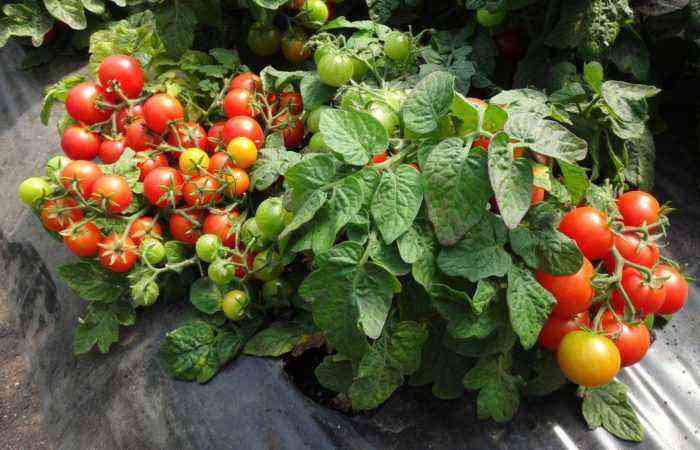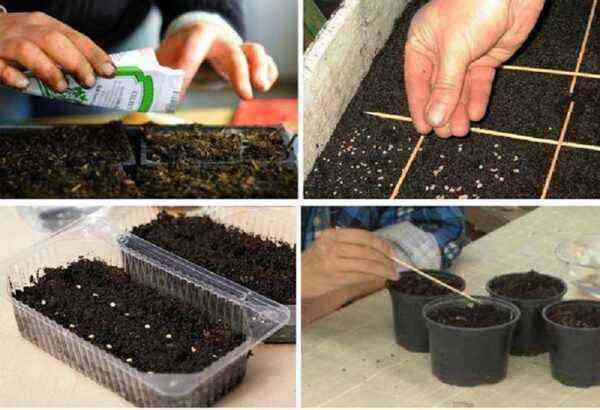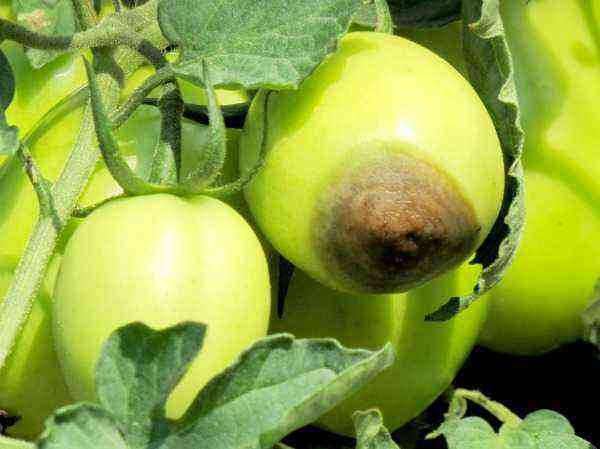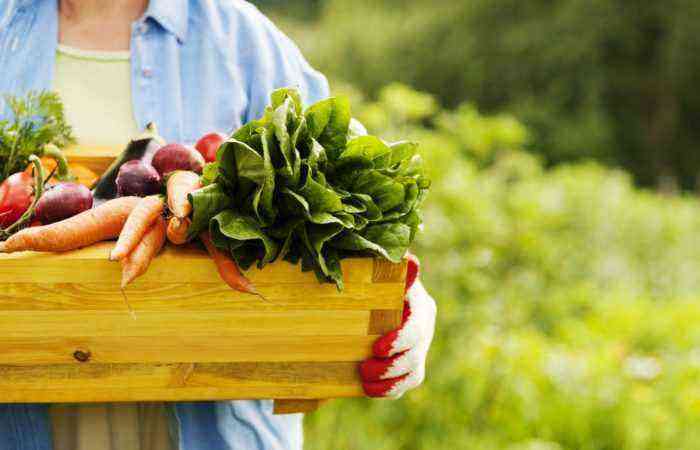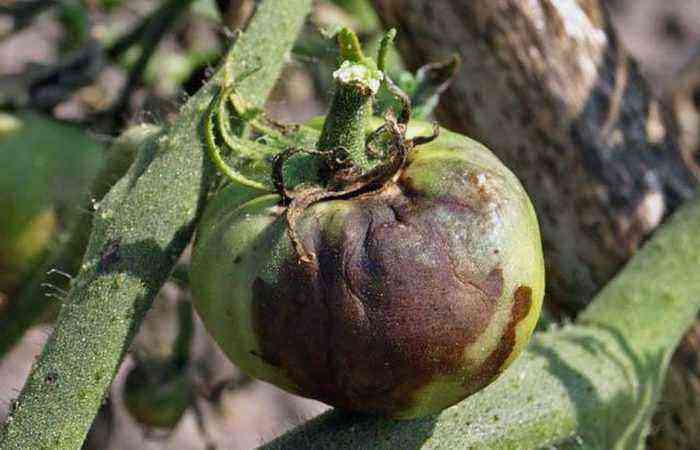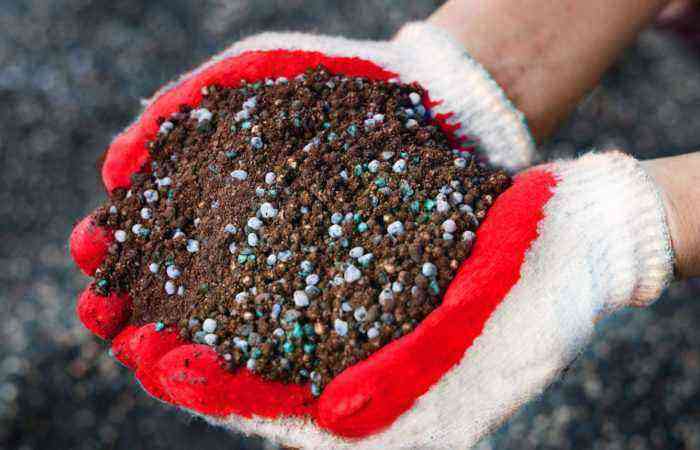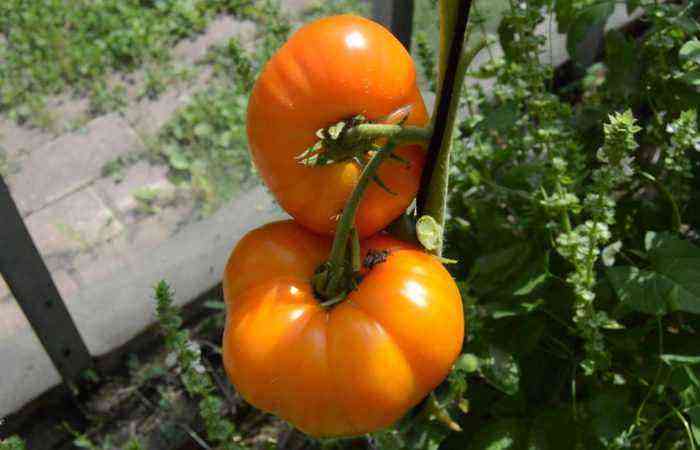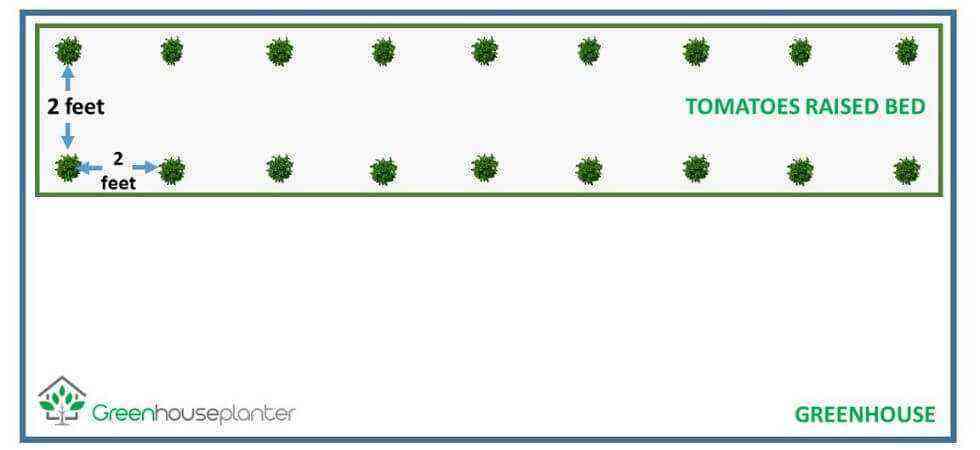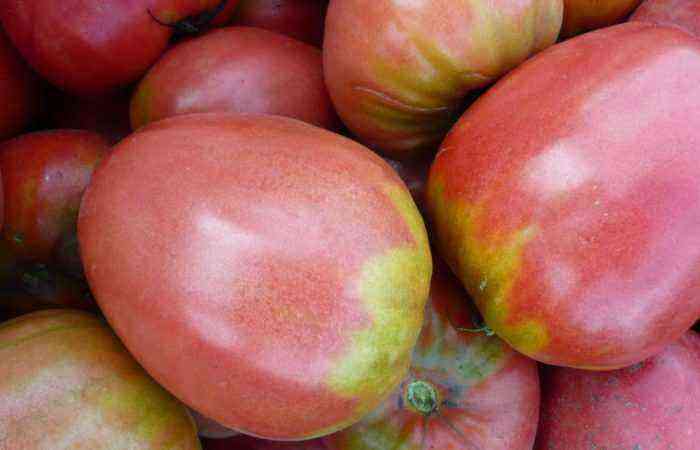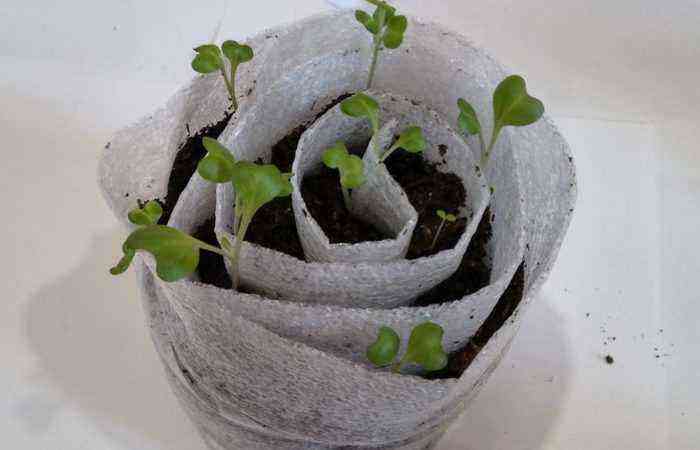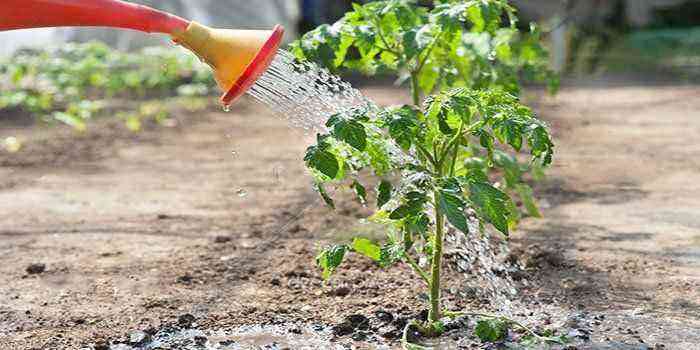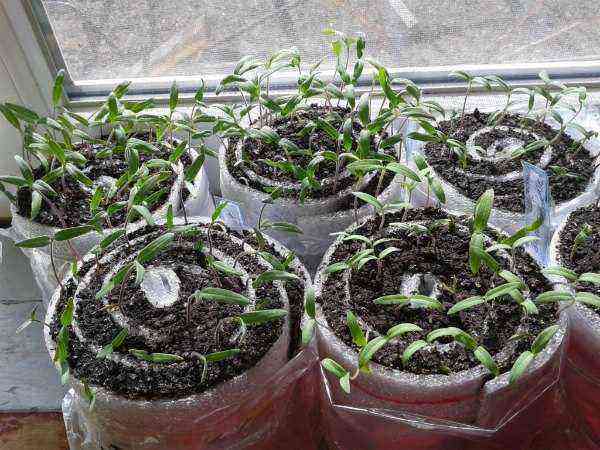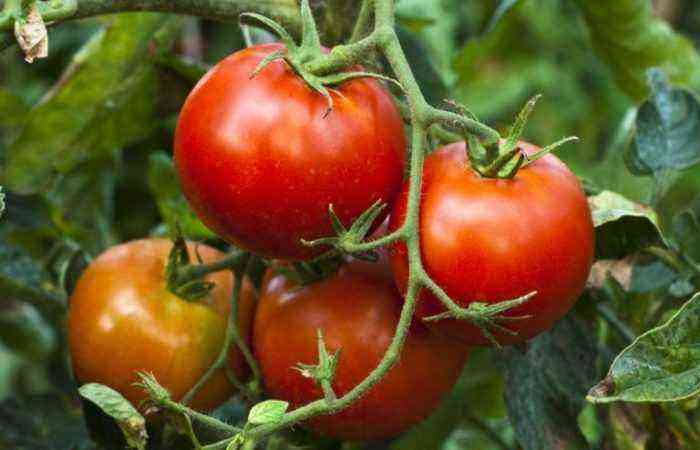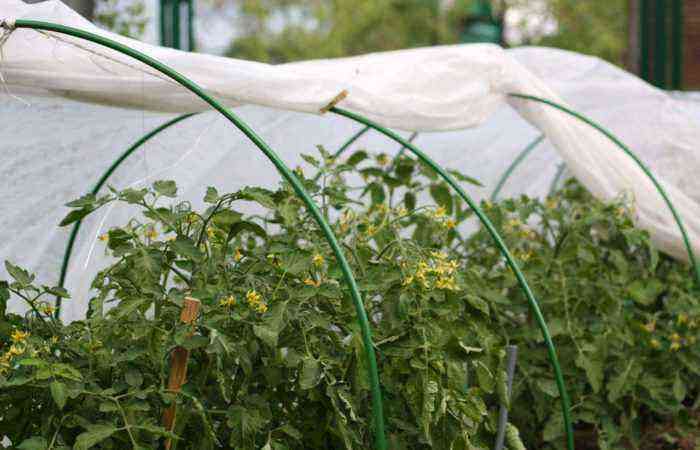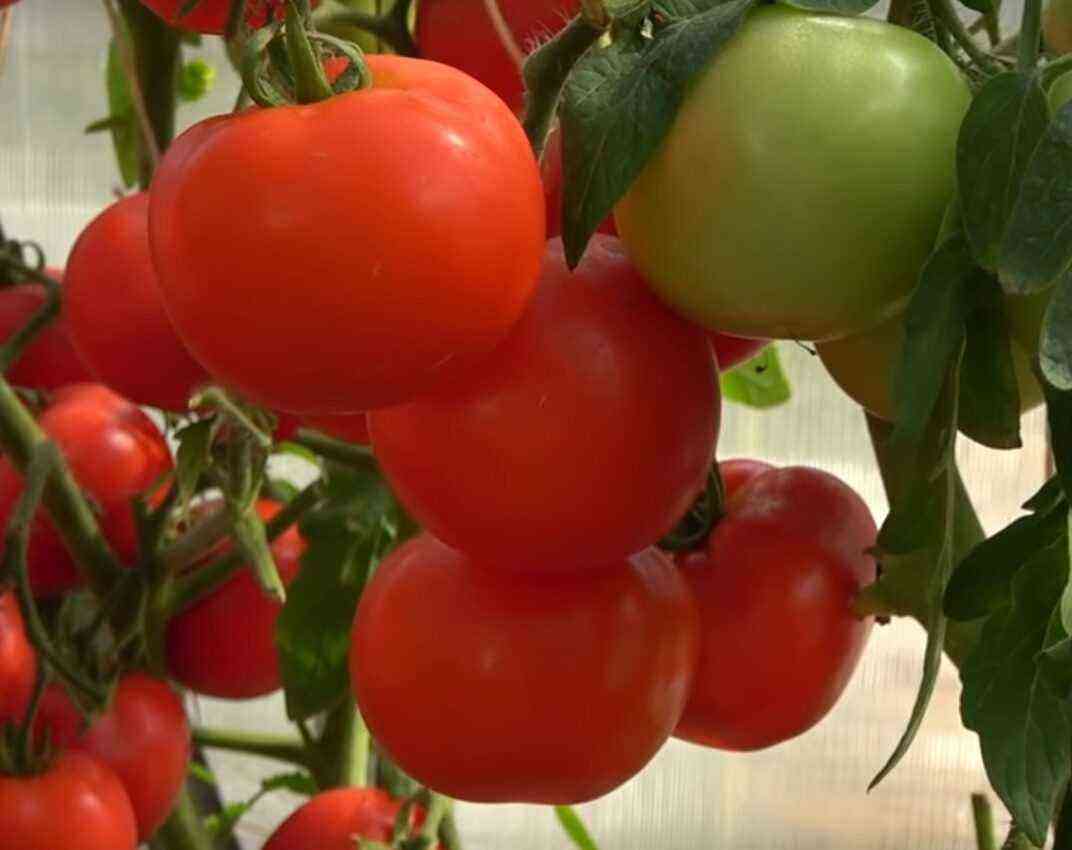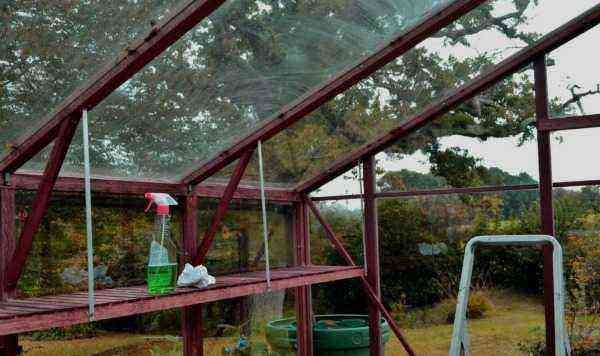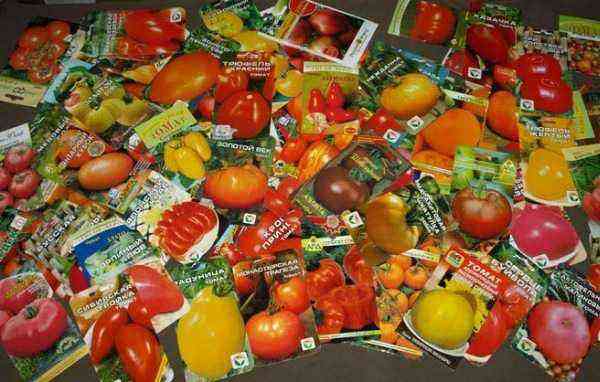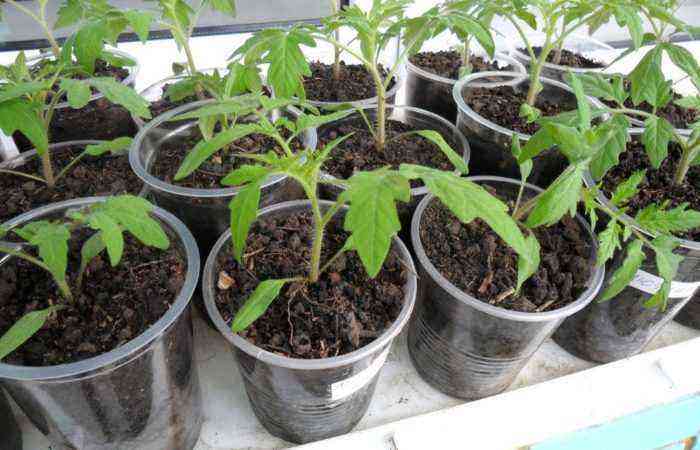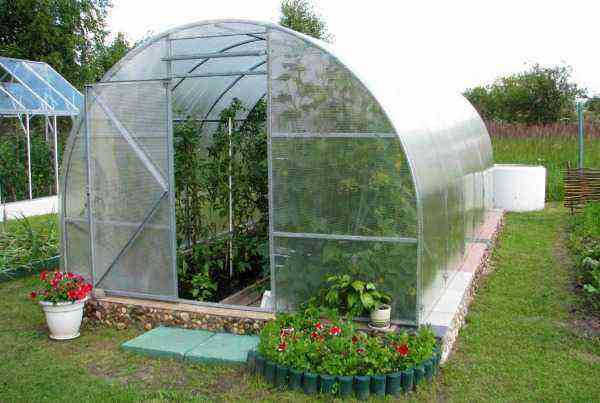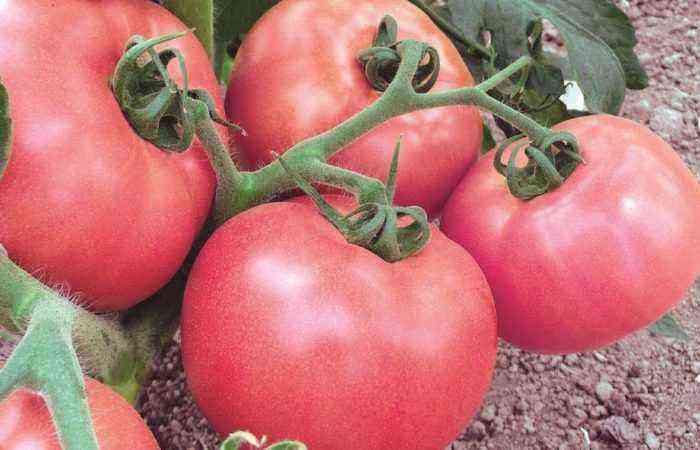Tomatoes on the balcony are not much different from those grown in the country. These are tasty and healthy vegetables that adults and children like. Everyone knows that the best vegetables are those that are grown with their own hands. And it does not matter if you do not have a suburban or suburban area. To grow tomatoes on the balcony, you should choose the right variety, arm yourself with knowledge and put it into practice. Next, we will step by step consider the stages of growing tomatoes on the balcony.
The best varieties for growing on the balcony
Specific conditions require a special approach. Many varieties are suitable for growing on a loggia. It should be based on the size of the room and your capabilities. It must be taken into account: no matter how large the balcony is, tomatoes will still grow there in a limited space. Therefore, it is better to prefer determinate varieties that do not grow too large. They will not suffer from lack of space, it is easier to care for them. In addition, early early maturing tomato varieties are best suited for rooms and loggias.
The best varieties of tomatoes for balconies, loggias and room conditions:
- Variety Bonsai – the variety gives delicious red tomatoes weighing up to 30 grams. The fruits are red, round, smooth. This is one of the best varieties for loggias and room conditions.
- Variety Cherry Lady – tomatoes weighing 15 grams, red. The shape of the fruit is flat-round smooth. Heat-resistant – what you need for a loggia. The taste is excellent.
- Variety Cherrywaterfall – a variety with limited height growth. Red elliptical fruitlets weighing 9-14 grams form clusters. Fruits are dense, but tasty. Design solution.
- Variety Cherripalchiki – red tomatoes weighing 15-20 grams. The difference between the variety is cylindrical smooth fruitlets, like fingers!
- Variety Cherinano – flat-round smooth tomatoes 10-15 grams. The color of the tomatoes is red.
- Variety Boni MM – Fruit ripening will occur in 85 days. The plant is standard, branched. Tomatoes are not quite small – up to 60 grams. They are red, slightly ribbed, flat. It’s very original.
- Variety Hummingbird – a tomato up to 50 centimeters high. Tomato round, smooth up to 50 grams. Ripens 85 days after germination. Simple and delicious.
- Variety Sweet berry – delicious red fruits weighing 20-30 grams. Tomatoes are very tasty.
- Variety Cherry strawberry – Red fruits weighing 20-30 grams. Well, very attractive name!
- Variety Noir Cocktail rounded tomatoes weighing 20 grams. The color is purplish brown!
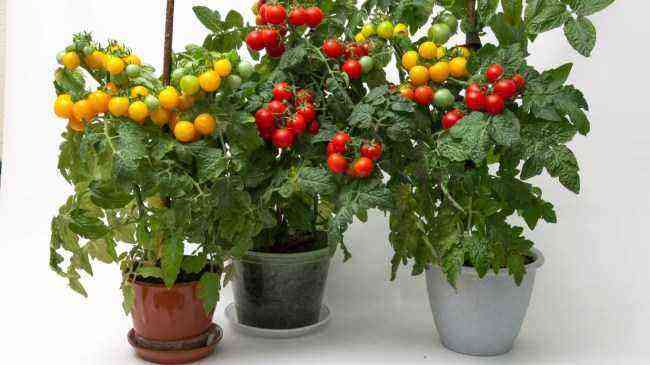 And tasty and beautiful
And tasty and beautiful
Preparing the seeds for sowing
To get a tomato crop on the balcony at the beginning of summer, seed preparation should be done in February. If you plan to plant different types of tomatoes, then you should not mix them, but you need to prepare each one separately.
To get the harvest as early as possible, seed preparation should be done in February. If you plan to plant different types of tomatoes, then you should not mix them, but you need to prepare each one separately. For soaking seeds, it is better to buy one of the biological products (biofungicides): Alirin-B, Baktofit, Bisolbicide, Gliocladin Trihacin, Trichoderma Veride 471, Fitolavin, Fitosporin. These preparations are intended for the prevention of tomato diseases.
If there is no possibility or desire to buy biological products, you can dilute a few drops of potassium permanganate in water so that the water acquires a light pink hue. Immerse the seeds in it for three hours. After disinfection, the seeds can be treated with biostimulants that increase germination, such as Zircon. The next step is sowing seeds.
 Tomatoes on the balcony
Tomatoes on the balcony
We grow seedlings tomatoes on the balcony
For plants, you need to prepare a container from any durable material, the height of the walls of which should not exceed 8-9 cm. First of all, we pour a little expanded clay into the container, and on top of it, the soil mixture (earth, sand, peat). The substrate is better to buy in the store. Do not collect soil from the lawn. The soil in the container should be poured abundantly with warm water, wait until it is absorbed.
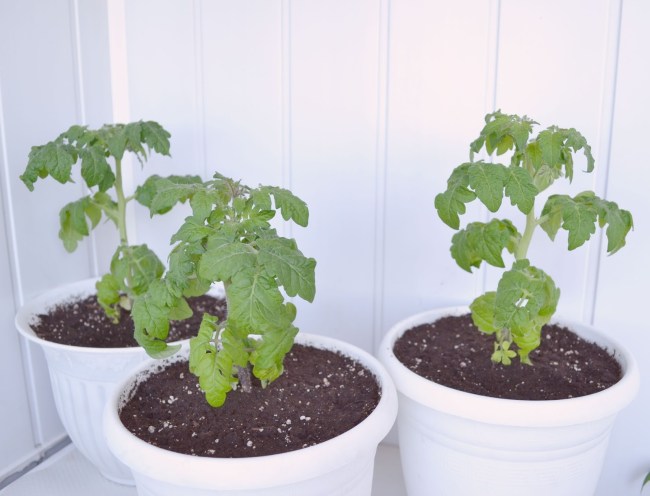 Tomatoes in permanent pots
Tomatoes in permanent pots
Care of young shoots
Sowing tomatoes at the end of winter, you will see seedlings already in the first weeks of March. With the advent of the first sprouts, you can remove the film, but the container with the future seedlings remains in the same place until all the seeds that you have planted have sprouted. Only after all the seedlings have risen, the container is sent to the balcony, creating backlight for the shoots.
Tomatoes on the balcony require lighting for active further development. On the loggia, the temperature should be adjusted and be at least 20 degrees. When the leaves appear, the temperature in the room can be gradually reduced.
Seedlings do not require excessive watering, the ground should be slightly damp. Watch the sprouts, if you notice obvious signs of disease on them, it is better to start treatment right away. When irrigating, make sure that water does not get on the leaves. If this happens, you need to ventilate the lugia and raise the temperature a little so that they dry.
Hardening is a mandatory measure for the care of this vegetable crop. On a warm day, the windows on the balcony open, and close at night. Noticing that the lower part of the stem has turned blue, do not panic, as this is a sign that the plant has hardened and is used to the air.
Watering the seedlings is carried out with drinking settled water at room temperature. As before, it should not be excessive. Several times a week you need to loosen the soil, saturating it with oxygen. Remember that the roots of the seedlings are close to the surface, so try not to touch them while loosening.
You can resort to mulching. To do this, peat is taken and poured between plants, forming low partitions. With their help, you can reduce the amount of watering, and prevent the drying of the top layer of the earth.
When the seedlings have 1-2 true leaves, they need to dive into individual cups. Don’t forget to make holes in the bottom of the cup to let the water out. When transplanting, do not forget about picking – when the seedling is taken out of the container, the tip of the root should be pinched. This allows you to strengthen the root and stimulates its growth.
A week after picking seedlings, you can start feeding. For feeding tomatoes on the balcony, complex fertilizers designed for vegetables are suitable. Perfect, for example, water-soluble fertilizer Fertik Start. It is bred strictly according to the instructions and watered with a solution under the stem. Top dressing promotes root development. Before fertilizing, you should water the soil, and you need to make the composition only after a day. The second dressing is done a week before planting tomatoes in a permanent container.
We transplant tomatoes to the main place
Plants can be transplanted into a permanent pot 1,5-2 months after the first shoots. Plants by this time should be with a thick stem, massive leaves and a flower brush.
The whole process in stages:
- good soil moisture in containers with seedlings;
- the plant is taken at the bottom of the stem close to the ground and gently pulled out along with a clod of earth;
- now, in a new container, a hole is made in the ground with a stick, and a shoot is lowered into it to the cotyledon leaves;
- The soil at the stem should be easily crushed, and then watered.
You can plant tomatoes on the balcony in any convenient container, for example, plastic bottles, pots and flower boxes, buckets, basins, containers. Each tall specimen needs its own capacity. Instances of low growth can be planted in pairs, and the distance between them should vary between 7-10 cm. If you are going to grow tomatoes in large boxes, place several plants in each container at a distance of 40 cm from one another.
After transplanting, you need to create a shadow on the balcony and set the temperature to 18-20 degrees. This is how the stress on the bushes will be minimal, and they will quickly get used to the new conditions. After a few days, we remove the shading. At this point, the leaves and stems should straighten up.
Comprehensive care for tomatoes
Living conditions for tomatoes grown on a balcony should differ minimally from their natural habitat. Growing vegetables consists in watering, fertilizing, loosening the soil, maintaining the required temperature, and pollination.
Temperature
Tomatoes on the balcony are very sensitive to temperature fluctuations, and when it drops below 18 degrees, growth slows down. It is also necessary to monitor humidity, since its excessive indicator for tomatoes is detrimental: plants begin to wither and are likely to pick up fungal diseases. The room needs to be ventilated periodically: windows can be left open for a long time when it is warm outside, and in summer they can not be closed at all.
Watering
Irrigation should be carried out regularly, as soon as the soil dries. Suitable for irrigation is plain water from the tap, you can use drinking water. Moisture nutrition for vegetables growing on the balcony should occur much less frequently than for ground tomatoes. Everything will depend on the degree of soil moisture.
Watering should be moderate until the plants bear fruit, and when the crop starts, it is better to irrigate the plantings less often. Dryer soil leads to faster fruit ripening.
Pollination
Tomato is a self-pollinating plant. In some cases, parthenocarpic fruit formation is possible, that is, without fertilization. There are varieties on which seedless fruits are tied. In any case, tomatoes on the balcony do not need bees or other insects to set fruits.
Loosening
In order for the roots to grow and strengthen, it is very important to provide them with access to oxygen. Often, after watering, a crust forms on the surface of the earth, which prevents air from entering the soil. For this, loosening is carried out. It is important to start loosening the ground when the water has soaked in and the soil has dried out. It is convenient to loosen with a garden tool with three teeth on a short handle. Do not touch the ground 5 cm around the stem, so as not to injure the root.
If loosening is inconvenient or impossible for you, mulch the soil with peat. Such a composition prevents the formation of a crust on the soil surface and reduces the amount of moisture evaporation.
Additional fertilizing
Undoubtedly, the best fertilizer for vegetables is the organic composition. But in a city apartment, this is unlikely to be realistic, because natural products have a very unpleasant smell. Therefore, tomatoes growing on the balcony can be fed with mineral fertilizers. Fertik’s water-soluble fertilizer has proven itself well. If at the age of seedlings Fertik Start can be used, then Fertik Universal is suitable for adult plants.
Do not over-fertilize tomatoes on the balcony, because this will not lead to anything good. Act on the basis of the manufacturer’s recommendations – dilute the composition in the right proportions, and then there will be no problems.
Pasynkovanie
As the bushes grow, shoots form in the axils of the leaves. They have no practical value, but only draw all the juices from the plant and reduce the yield. Therefore, it is important to remove the shoots as soon as they stretch 2 cm. You just need to break them off with your hands, and pour wood ash on the affected area to disinfect it.
Pasynkovanie is recommended during the growing season. In addition to the shoots, you need to break off the lower leaves that lie on the soil. By freeing up space under the bush, you will provide the bush with air flow and disease prevention.
Tomatoes on an unglazed balcony
An unglazed balcony is not a hindrance to growing vegetables. Tomatoes can still be grown, and the whole process is practically the same, the difference is only in the care of seedlings and the time of sowing seeds. Depending on the climate in your area, seeds should be planted during March. If you live in the southern latitudes, then you can throw grains into the ground from the first days of spring.
As soon as the seeds sprout, the containers with them are placed on the windowsill. Here they are until transplanted into permanent pots. In order for the bushes to grow faster, they should be illuminated with fluorescent lamps. So their daylight hours will last, which will directly affect their development.
With the onset of heat, tomatoes on the balcony can be hardened off: daily, starting from 20 to 30 minutes and gradually increasing the time, take the containers with seedlings into the air so that the bushes get used to the new living conditions. The most important thing is not to forget to bring the containers with landings back into the room.
We pick seedlings in mid-May, keep it in the house for a few more days, and then take it outside. When your tomatoes have gone to the balcony for permanent growth there, carefully monitor temperature fluctuations and read the weather forecast so that all your efforts do not go down the drain. If there is a threat, a drop in temperature, the plants can be brought indoors for the night or covered with a film.
 Tomatoes on the balcony
Tomatoes on the balcony
Tomato diseases
Like tomatoes grown in the garden, balcony plants are also susceptible to various diseases. They are at risk of contracting fungal diseases. To avoid the disease, you need to carry out daily ventilation, and in the summer the windows should not be closed at all. If the weather is damp and cold, the doors, on the contrary, should be closed.
Buying chemical fungicides to protect balcony tomatoes from diseases is not worth it. Use biofungicides: Alirin-B, Baktofit, Bisolbicide, Glyocladin Trihacin, Trichoderma Veride 471, Fitolavin, Fitosporin.
You can grow tomatoes on the balcony, even without a personal plot. If you have a balcony, you can easily organize a kind of mini-bed on it. We have provided you with step-by-step instructions for growing vegetables at home. The main thing is to follow all the rules from beginning to end, and then you will surely get a rich harvest. We wish you success!
